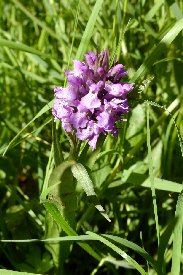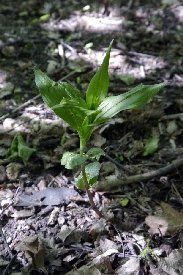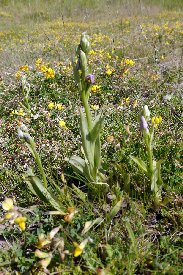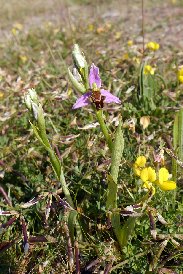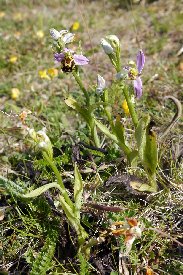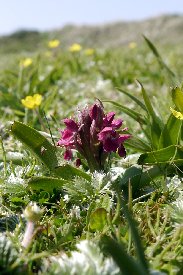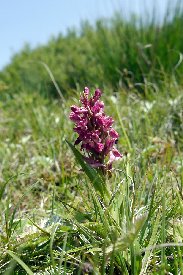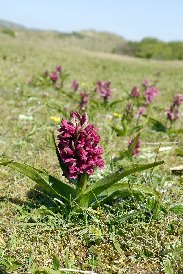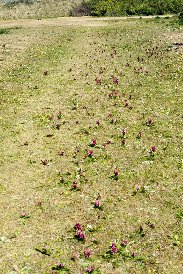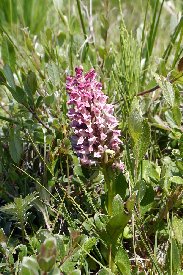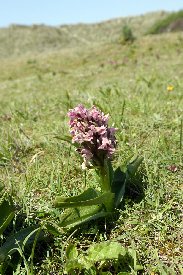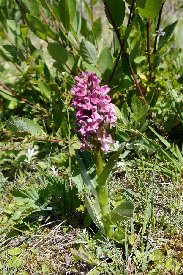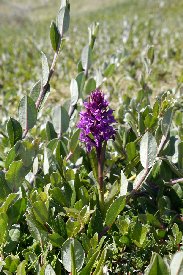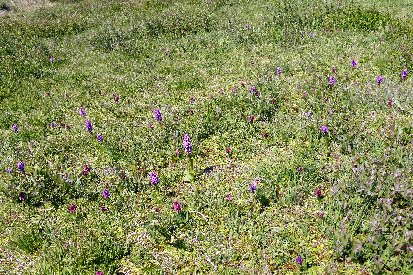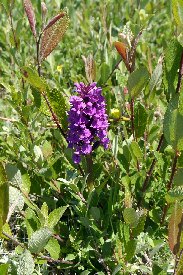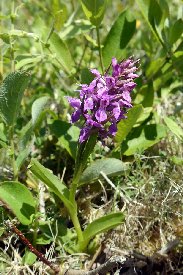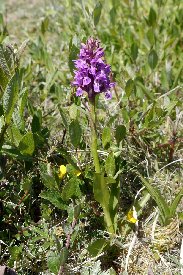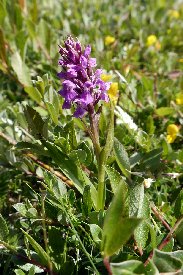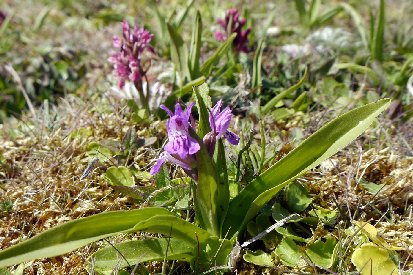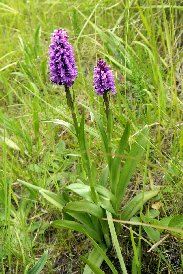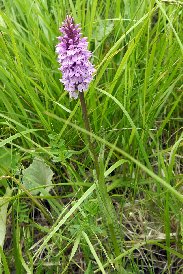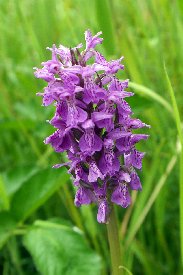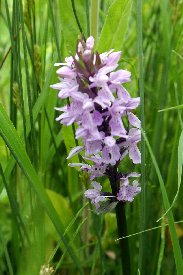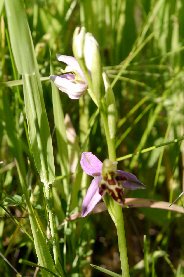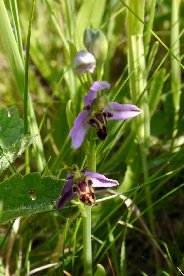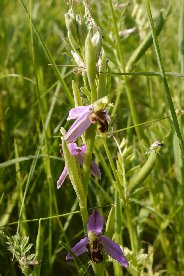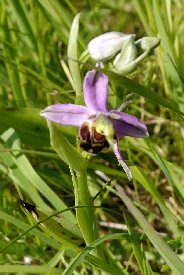|
|
||||||||||||||
|
|
||||||||||||||
 |
|
Moore Nature Reserve 2nd June 2023 (SJ 57812 85511) I thought that this was a new site for me, but as we arrive I immediately recognise the bridge over the Manchester Ship Canal and the car park. I also remember that last time I had drawn a blank here, explaining why there is no other mention of the reserve in these pages. Regardless, we press on hoping to take a different route to last time ... and we have a bit more luck. However, bit is the operative word. All that we come across, despite covering a good percentage of the routes here, is the occasional Southern Marsh Orchid and a small colony of what are likely to be Broad-leaved Helleborines just thrusting up. It is towards the end of the session that I remember that this was one place we resolved not to revisit due to the high number of biting flies around. Alyn Waters 3rd and 9th June 2023 This is just a quick reconnaissance trip to see if the new spot I was told about last year for Bee Orchids will have a good display this year. Well they will if we get a bit of rain soon. The ground is dry and the flowers are just about to come out. They seem to have the same requirements as the more numerous trefoils. A return visit six days later shows them much better, but note the blackening off of some leaves. Ynys Las 5th June 2023 (SN 60760 93789) Not coming here on a yearly basis seem to mean that we notice the differences each time. Last time there was a goodish area for orchids near the road close to the far end of the golf course. This time it is overgrown and lacks orchids. Neither do we see any in a dune enclosed area facing the sea where previously some Dactylorhiza. Instead the main viewing is in the large dune slack 200 metres from the visitor centre. At first it looks almost devoid, but getting closer we spot many many orchids. The jewels here are the Dune Early Marsh Orchids (var. coccinea if you prefer). They have a preference for the lower parts of the slack, even though the difference is only a couple of inches. One long thin depression is stuffed with these. Otherwise, there are pink flowered Early Marsh Orchids (var incarnata) and Northern Marsh Orchids. There is a nice patch which I do not recall visiting before with a these all mixed together. Though not out yet, I cannot help noticing just how many Marsh Helleborines will be in flower in a couple of weeks. It is almost impossible not to tread on some, but it looks like they will just spring back up.
Burton Mere RSPB 7th June 2023 (SJ 31409 73522) The first visit here way back was to see the Bee Orchids, but this year they are either scarce or we are just not seeing them because we are too early. Back then the Southern Marsh Orchids were a side-show. Today I am impressed by the numbers. Plenty to see bordering the paths and boardwalks, and more of them off piste. Do not bother with them because the boardwalks are there for a reason. What I do notice is that this SMO population has a different look to them compared to a couple of other local SMO sites. Those at Neston Old Quay are more uniformly pale, while those at Gowy Woods are more uniformly darker and have prominent flower spike bracts. The Mollington population is similar to these but without the bracts. The Burton plants show quite a range of shades. At least two or three of these sites are likely to have been colonised quite recently and the populations are thus also likely to have been formed from single plants with the exception of Burton Mere. Was this colonised naturally? The uniformity of other sites also suggests little or no cross over between populations. Maes y Pant 9th June 2023 (SJ 35397 55187) There is one reason for this visit. To see if the aberrant Bee Orchids we saw last year are out. They are. Again there are those with non-symetrical lip patterns, one quite Wasp Orchid like, and one with a massively extended column. They are not even consistent on one flower spike. These are not recognised variants, more likely to be one-off aberrations. There appears to be no reason for this such as soil contamination. Going back to old maps there was no industry on this site, the nearest being a small quarry not too far away.
|
|
|
||||||||||||||
